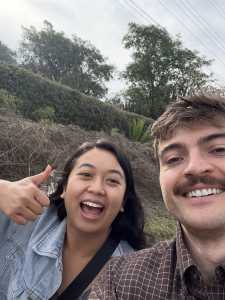My name is Dr. Ryan Kouchakji, and I am a internal medicine resident at the University of Washington planning on traveling to Naivasha, Kenya in March 2025 for one month.
While in Naivasha, I will be working at NCRH which is a part of Kenya’s national health care system, a tiered referral structure organized by region. I will serve as a clinician educator, collaborating closely with local Kenyan healthcare providers. My primary focus will be to strengthen diagnostic capabilities by providing training on structured diagnostic frameworks and the effective utilization of tools such as point-of-care ultrasound (POCUS). This partnership aims to enhance clinical decision-making and improve patient outcomes by integrating evidence-based practices into routine care. Together, we will create sustainable learning opportunities, foster skill development, and empower clinicians to deliver high-quality healthcare tailored to the unique needs of the community.
NCRH is a 273-bed government hospital notable for a nationally renowned maternity wing called the Friends of Naivasha Women’s Centre that opened in 2013 with the support of local philanthropy. In July 2015, NCRH opened an emergency department (called Accident & Emergency, aka A&E or Casualty) to manage the high volume of road traffic accidents brought in from the nearby highways. In December 2015, the Radiology Department was renovated and received brand new ultrasound and X-ray machines, including a portable X-ray. There are two CT scanners available in town at a private clinic called L&L and a branch of Nairobi Women’s Hospital, though it usually takes several days for families to raise the funds necessary to pay for the CT before it is performed.
As a clinical educator at Naivasha Referral and County Hospital (NCRH), I will serve a diverse population from Naivasha and its surrounding regions.
The population includes both rural and peri-urban communities, with a significant number relying on the hospital as the primary healthcare provider due to limited access to other facilities. NCRH often caters to pregnant women and children, addressing conditions such as maternal complications, neonatal illnesses, malnutrition, and vaccine-preventable diseases. The population faces a high burden of communicable diseases, including malaria, HIV/AIDS, tuberculosis, and respiratory infections, requiring strong diagnostic and treatment frameworks. As lifestyles shift, conditions like hypertension, diabetes, and cardiovascular diseases are becoming more prevalent, necessitating awareness and capacity to diagnose and manage these cases effectively. With the proximity to the Nairobi–Nakuru highway, the hospital frequently handles trauma cases from road traffic accidents, as well as other medical and surgical emergencies. Finally, many patients come from underserved areas, facing financial and logistical barriers to accessing healthcare. NCRH often serves as both a referral center and a primary care hospital, highlighting the importance of cost-effective, high-impact clinical tools like point-of-care ultrasound (POCUS).
As a clinical educator, my work will be centered on equipping local clinicians with skills and tools to address these healthcare challenges, improving the delivery of patient care for this diverse and underserved population.
During my clinical education rotation in Naivasha, Kenya, as a doctor working at NCRH (Naivasha Referral and County Hospital), I aim to have a meaningful and lasting impact in the following ways:
I will be collaborating closely with local clinicians, I hope to contribute to strengthening diagnostic capabilities and improving patient management through teaching evidence-based diagnostic frameworks and clinical skills, including the use of tools like point-of-care ultrasound (POCUS). This will enable the team to provide more accurate and timely care to patients.
My goal is to create a sustainable learning environment by empowering Kenyan clinicians with skills and knowledge they can continue to apply and share with colleagues. By fostering a culture of teaching and learning, I hope to contribute to long-term capacity-building within the local healthcare system.
Through improved diagnostics and streamlined clinical workflows, I anticipate better patient outcomes, including earlier diagnosis and more effective treatment plans, ultimately reducing morbidity and mortality in the region.
This rotation presents an opportunity to learn from the unique challenges and resource-limited settings of the Kenyan healthcare system while sharing insights from my training and experiences. By understanding and integrating local practices and perspectives, I can grow professionally and contribute meaningfully to patient care and clinician development.
Overall, I hope to leave a positive impact on the clinicians I work with, the patients they serve, and the overall quality of care delivered at NCRH, while fostering a mutual exchange of knowledge and skills.









